Why is trekking best during the Monsoon in Nepal?
Trekking during the monsoon season in Nepal, which spans from June to September, offers a unique and enriching experience distinct from any other time of the year. Despite the challenges posed by the rain, such as slippery trails and occasional visibility issues, the monsoon season brings out the vibrant best in Nepal's landscapes and provides trekkers with several compelling advantages:
-
Lush Landscapes: The monsoon rains transform the countryside into a vivid display of greenery. Forests become denser, and valleys are carpeted in various shades of green, offering breathtaking views. This is the time when Nepal’s flora is at its most vibrant, with flowers blooming and rivers brimming with fresh water, creating spectacular waterfalls and streams along the trekking routes.
-
Fewer Crowds: One of the significant benefits of trekking in Nepal during the monsoon is the fewer number of tourists on the trails. This provides a more peaceful and personal experience of the Himalayas, allowing trekkers to immerse themselves fully in the natural beauty and tranquility without the distraction of large crowds.
-
Unique Cultural Insights: The monsoon is an important season for agriculture in Nepal, and trekking during this time offers a unique insight into the local way of life, as communities are busy with planting and other agricultural activities. Trekkers get the opportunity to see a different aspect of Nepalese culture and can interact more closely with the locals, who have more time to share their stories and traditions.
-
Rain Shadow Areas: Certain regions in Nepal, such as Mustang or parts of Dolpo, lie in the rain shadow of the Himalayas, making them ideal for trekking during the monsoon. These areas receive significantly less rainfall, allowing for dry and pleasant trekking conditions while the rest of the country experiences monsoon showers.
-
Adventure and Challenge: Trekking during the monsoon adds an element of adventure and challenge, appealing to those who seek a more demanding experience. Navigating wet trails and crossing swollen rivers can be rewarding, offering a sense of achievement and an adrenaline rush that is less likely to be found during the drier seasons.
-
Wildlife and Flora: The monsoon season is a fantastic time for nature lovers, as the national parks and conservation areas are teeming with life. The lush vegetation supports a wide variety of wildlife, some of which are more visible during this season. Additionally, the forests are alive with the sounds of birds and insects, enhancing the trekking experience.
-
Better Prices: With fewer tourists visiting during the monsoon, prices for accommodations, guides, and porters are often lower. This can make trekking more affordable, allowing for a longer or more luxurious trekking experience at a fraction of the cost.
While trekking in Nepal during the monsoon requires good preparation, such as waterproof gear and possibly more flexible travel plans, the rewards of witnessing the Himalayas in their monsoon-draped splendor, enjoying the solitude of the trails, and experiencing the warmth of Nepalese hospitality make it a uniquely rewarding adventure.
Phoksundo Lake Trek
The Phoksundo Lake Trek is one of the maximum lovely and less-traveled paths in Nepal, supplying a profound adventure into the far-off and mystical landscapes of the Dolpa place. This trek is especially famous for its lovely natural splendor, highlighted with the aid of the deep blue and emerald shades of Phoksundo Lake, the private and most serene lake in Nepal.
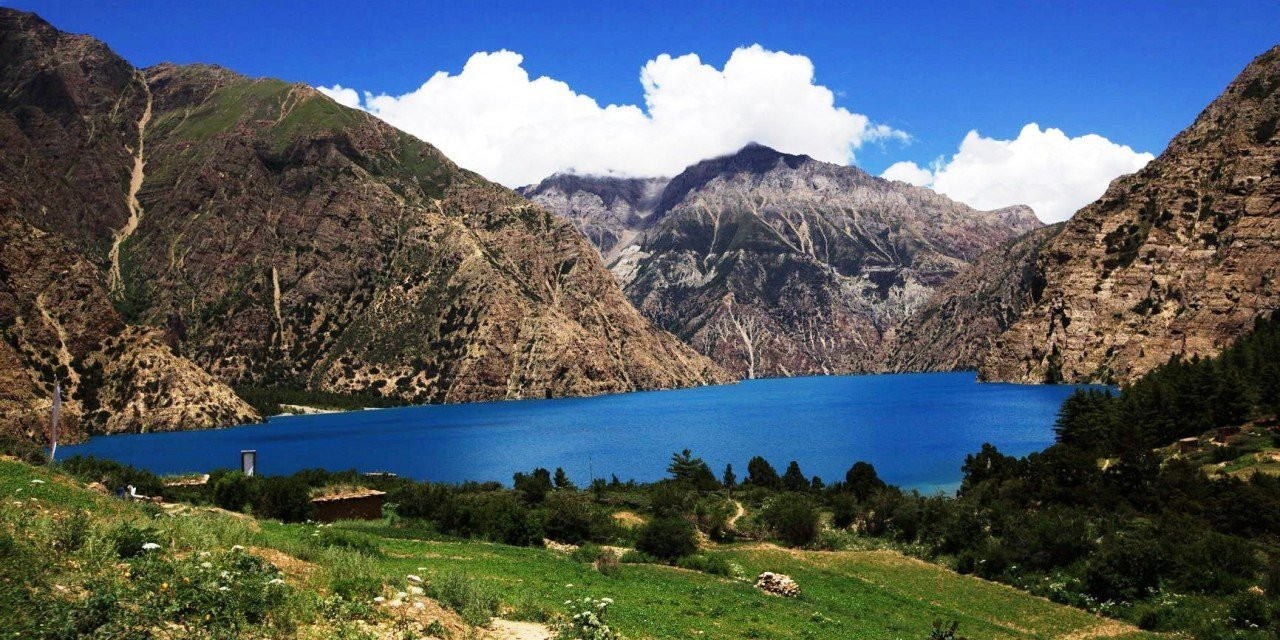
Key Features
-
Duration: Typically 10-15 days, depending on the chosen route and pace.
-
Difficulty: Moderate, suitable for trekkers who can handle multiple days of walking in somewhat difficult terrain.
-
Best Season: While accessible most of the year, during the monsoon season, the area receives less rain than other parts of Nepal, making it an excellent choice for trekking from June to September.
Highlights of the Phoksundo Lake Trek
-
Phoksundo Lake: The heart of the trek, Phoksundo Lake, is renowned for its astonishing deep blue color and crystal-clear waters, surrounded by steep, snow-capped mountains. It's a perfect spot for reflection and nature photography.
-
Shey Phoksundo National Park: This trek passes through Shey Phoksundo National Park, which boasts a rich variety of flora and fauna, including the elusive snow leopard, blue sheep, and a range of bird species.
-
Bon Monasteries: The region is known for its ancient Bon monasteries and the Bonpo religion, a pre-Buddhist sect that is still practiced in some of the remote villages along the trek.
-
Ringmo Village: A picturesque village that offers a glimpse into the traditional lives of the Dolpo people, with beautifully crafted stone houses and vibrant local culture.
-
Suligad Waterfall: Trek through beautiful landscapes including the impressive Suligad Waterfall, a scenic highlight on the way to Phoksundo Lake.
Trekking Route: The journey typically begins with a flight from Kathmandu to Nepalgunj, followed by another short flight to Juphal. From Juphal, trekkers walk to Dunai, then continue to Chhepka, and onto Ringmo Village along the banks of the Phoksundo River. The trail then leads directly to Phoksundo Lake, where trekkers can spend days exploring the natural and cultural wonders of the area.
Tips for Trekkers:
-
Preparation: Due to its remote location, it’s essential to be well-prepared with the right gear and sufficient supplies.
-
Acclimatization: Take time to acclimatize to the altitude, as Phoksundo Lake sits at about 3,611 meters (11,849 feet).
-
Permits: Ensure secure all necessary permits for Shey Phoksundo National Park and the restricted areas within Dolpa.
The Phoksundo Lake Trek gives an unforgettable enjoy via one of all Nepal's maximum impressive and mystical areas. It's an excellent choice for those looking to discover the herbal splendor and particular cultural heritage of the Himalayas far away from the extra crowded trekking routes.
The Tsum valley and Manaslu Trek
The Tsum Valley and Manaslu Circuit trek is a fascinating journey through one of Nepal's maximum secluded and spiritually rich areas. This trek combines the isolated and serene Tsum Valley with the adventurous and hard Manaslu Circuit, providing trekkers with a unique mixture of cultural immersion and natural beauty.
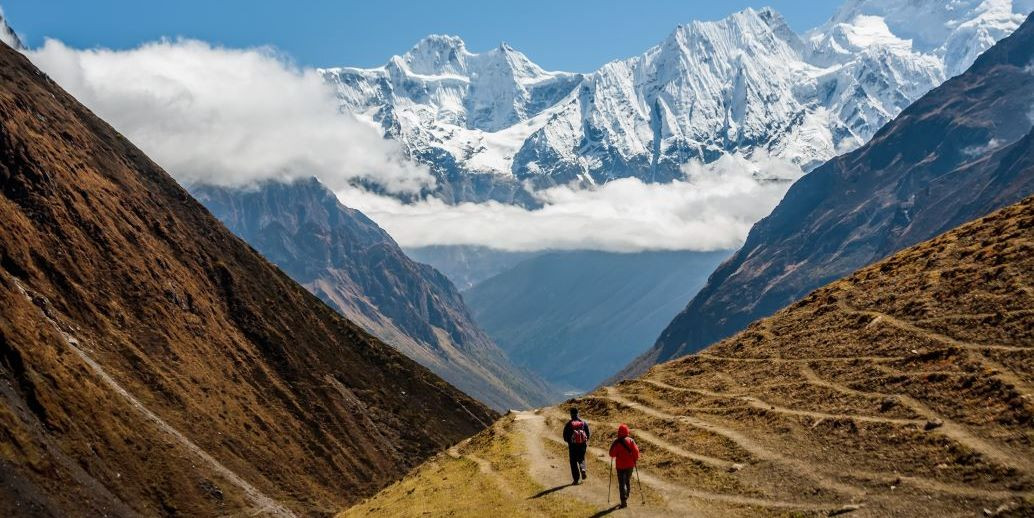
Key Features
-
Duration: Typically 18-20 days, depending on pace and specific route variations.
-
Difficulty: Challenging, due to its length and the high altitudes encountered.
-
Best Season: Although it can be undertaken during the monsoon season, the best times are generally during the spring (March to May) and autumn (September to November) when the weather is clearer.
Highlights of the Tsum Valley and Manaslu Circuit Trek
-
Manaslu: At 8,163 meters, Manaslu is the world’s eighth-highest peak, offering breathtaking views and a less crowded alternative to more popular treks like the Everest Base Camp or Annapurna Circuit.
-
Tsum Valley: Known as the "hidden valley", Tsum offers a peek into untouched landscapes and a traditional lifestyle that has remained largely unchanged over centuries. The valley is known for its strong Buddhist culture, similar to that found in neighboring Tibet.
-
Ancient Monasteries: The trek passes numerous ancient gompas (monasteries), including Mu Gompa and Rachen Gompa, which are among the most remote and significant in the region.
-
Larkya La Pass: One of the trek’s highest points at 5,160 meters, crossing the Larkya La pass provides dramatic panoramic views of the Himalayas, including Himlung Himal, Cheo Himal, and Kang Guru.
-
Ethnic Diversity: The trail traverses areas inhabited by various ethnic groups, including Nubri and Tsum, where ancient Tibetan Buddhism still thrives. This provides a wonderful opportunity to witness traditional Tibetan Buddhist practices and lifestyles.
Trekking Route: The journey begins with a drive from Kathmandu to Soti Khola, passing through Arughat. From Soti Khola, trekkers head up the Budhi Gandaki Valley through forested hillsides to Machha Khola, Jagat, and eventually to the Tsum Valley entrance. Exploring the Tsum Valley, the route then reconnects with the Manaslu Circuit, heading towards Larkya La pass and descending through the villages of Bimthang and Dharapani, finally ending in Besi Sahar where a vehicle can take trekkers back to Kathmandu.
Tips for Trekkers:
-
Permits: This trek goes through restricted areas, requiring special permits. A Manaslu Conservation Area Permit (MCAP) and Annapurna Conservation Area Permit (ACAP), along with a Restricted Area Permit for Tsum and Manaslu, are necessary.
-
Guides: Due to the challenging nature of the trek and the restricted areas, hiring an experienced guide and possibly porters is mandatory.
-
Preparation: Comprehensive preparation is essential, including physical training and proper gear for high-altitude trekking and variable weather conditions.
The Tsum Valley and Manaslu Circuit trek is not only a bodily journey but a profound cultural and spiritual exploration, making it one of the maximum enriching experiences in the Himalayas. This trek is best for the ones looking to venture off the beaten direction and immerse themselves inside the depth of Nepal’s herbal and cultural history.
Lower Dolpo Trek
The Lower Dolpo Trek is an awesome journey via one of the most far-flung and beautiful regions of Nepal. This trek offers a blend of the excessive journey and particular cultural exposure, taking you into the heart of the remoted Himalayan mountainscape with a danger to enjoy the historic traditions of the local people.
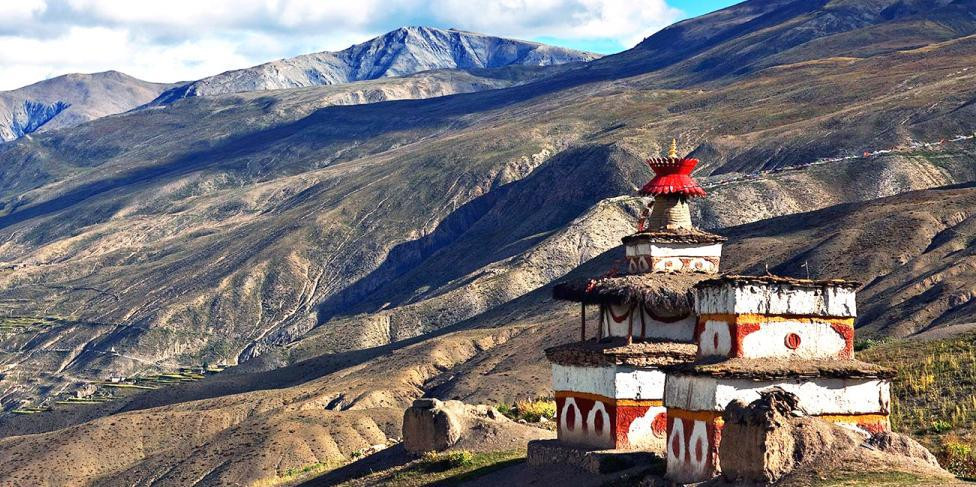
Key Features
-
Duration: Typically 18-21 days.
-
Difficulty: Challenging due to its rugged terrain and the remoteness of the area.
-
Best Season: Ideal during the monsoon months from June to September, as Dolpo lies in the rain shadow of the Himalayas and receives significantly less rainfall.
Highlights of the Lower Dolpo Trek
-
Shey Phoksundo Lake: Trek to the stunning Phoksundo Lake, famous for its mesmerizing turquoise waters and the scenic Ringmo village perched on its banks.
-
Shey Phoksundo National Park: Explore this beautiful national park, home to a rich variety of wildlife including the snow leopard, Himalayan blue sheep, and the Himalayan tahr.
-
Bon Monasteries: Experience the ancient Bon religion, which predates Tibetan Buddhism. Visit the Bon monasteries like Shey Gompa, which is often referred to as the spiritual heart of Dolpo.
-
Rugged Landscapes: Traverse a diverse range of landscapes, from lush forests to arid plains reminiscent of the Tibetan highlands.
-
Tibetan-style Villages: Engage with the unique culture of the indigenous Tibetan-descendant communities who live in high-altitude villages throughout the region.
Trekking Route: The Lower Dolpo Trek generally starts with a flight from Kathmandu to Nepalgunj and another to Juphal. From Juphal, trekkers proceed to Dunai, the administrative headquarters of the Dolpo region, then trek through Tarakot, Laini, and Nawarpani, and enter the heart of the Dolpo region at Dho Tarap. The route then leads to the stunning Shey Phoksundo Lake and the Shey Phoksundo National Park before heading towards Shey Gompa and finally exiting through Saldang and Juphal again.
Tips for Trekkers:
-
Acclimatization: Due to the high altitudes reached during this trek, sufficient time for acclimatization is essential.
-
Permits: Special permits are needed as Dolpo is a restricted area. These include the Restricted Area Permit (RAP), the Shey Phoksundo National Park Permit, and the Trekkers' Information Management System (TIMS) card.
-
Guides and Porters: Hiring experienced guides and porters who are familiar with the region’s terrain and culture is crucial.
-
Preparation: Given the remoteness of the area, thorough preparation in terms of gear, food supplies, and medical kits is necessary.
The Lower Dolpo Trek is a profound adventure right into a much less frequented part of the Himalayas, offering awe-inspiring landscapes and a peek into the lives of groups unchanged with the aid of modernity. This trek is an ought to do for those who are seeking to explore deep into the Himalayan wilderness and revel in the untouched splendor and historic tradition of Nepal. The Lower Dolpo Trek is a profound adventure right into a less frequented part of the Himalayas, presenting awe-inspiring landscapes and a peek into the lives of communities unchanged using modernity. This trek is a must-do for people who are searching for to discover deep into the Himalayan wasteland and revel in the untouched splendor and ancient culture of Nepal.
Annapurna Circuit Trek
The Annapurna Circuit Trek is a classic and popular trek in Nepal that encircles the majestic Annapurna variety. Renowned for its super range in both landscapes and cultures, this trek gives a comprehensive Himalayan trekking enjoy, attracting adventurers from round the world.
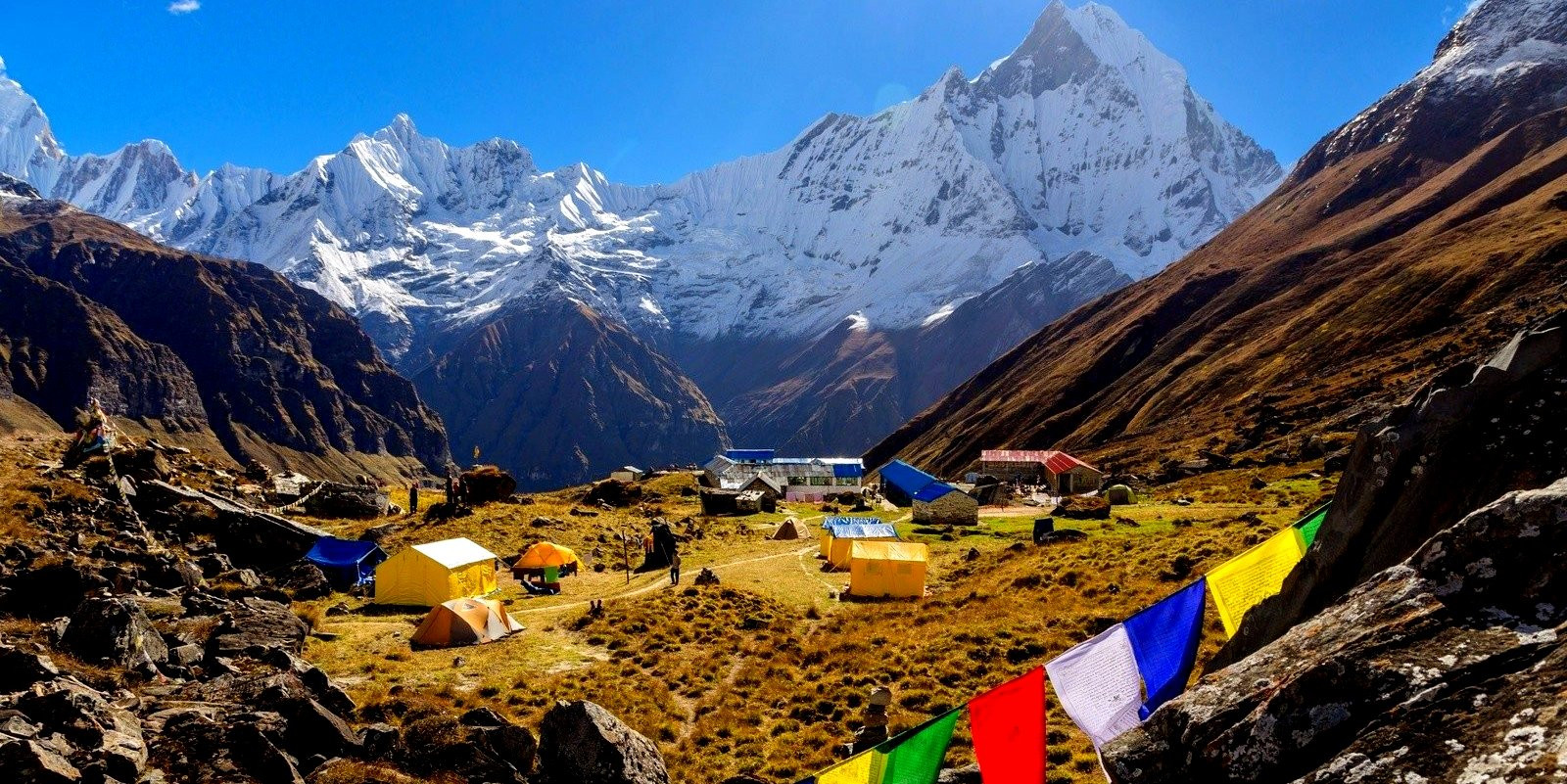
Key Features
-
Duration: Generally takes 12 to 20 days, depending on the starting point, pace, and any side trips taken along the way.
-
Difficulty: Moderate to challenging, suitable for trekkers with some experience in high-altitude trekking.
-
Best Season: The trek can be done in the monsoon season, thanks to the region's location in the rain shadow of the Annapurna range, though post-monsoon (September to November) and pre-monsoon (March to May) are the most popular times due to clearer skies and more stable weather.
Highlights of the Annapurna Circuit Trek
-
Diverse Terrain: The trek transitions from lush subtropical forests and paddy fields in the lower reaches to high-altitude deserts and snowy passes as it progresses.
-
Thorong La Pass: Crossing Thorong La at 5,416 meters (17,769 feet) is a major highlight and challenge, offering stunning views across the Annapurna massif and beyond.
-
Cultural Richness: The route passes through various villages of the Gurung, Manangi, and Thakali communities, each offering unique insights into their traditions, architecture, and daily lives.
-
Natural Hot Springs: At several points along the trek, such as Tatopani, trekkers can relax in natural hot springs, which are believed to have healing properties.
-
Sacred Sites: The trek includes paths that lead to the Muktinath Temple, a sacred site for both Hindus and Buddhists, located near the Thorong La pass.
Trekking Route: The trek traditionally starts in Besisahar or Bhulbhule in the Marsyangdi River valley and follows the river upstream through lush green hills, passing through towns like Manang, where trekkers often take a day to acclimatize. From Manang, the trek goes up to Thorong La pass, the highest point of the trek, then descends to Muktinath. From there, it continues down the Kali Gandaki gorge (the deepest gorge in the world) to Tatopani, and ends in Nayapul or flies out from Jomsom to Pokhara.
Tips for Trekkers:
-
Acclimatization: Spend adequate time acclimatizing, especially in Manang, to prevent altitude sickness.
-
Permits: The Annapurna Conservation Area Permit (ACAP) and the Trekkers’ Information Management System (TIMS) card are required for all trekkers.
-
Guides and Porters: Hiring a guide and porters can enhance your trekking experience, providing valuable insights into the local culture and ensuring safety.
-
Preparation: Equip yourself with appropriate trekking gear for variable temperatures and ensure you have the essentials for high-altitude trekking.
The Annapurna Circuit Trek no longer most effectively checks a trekker’s endurance but additionally immerses them in the natural beauty and cultural tapestry of Nepal. It remains one of the most worthwhile hiking experiences in the Himalayas, appropriate for those looking for a mixture of adventure, tradition, and herbal beauty.
Everest Base Camp Trek
The Everest Base Camp Trek is one of the maximum iconic and revered treks in the global, offering adventurers the opportunity to stand on the foot of the very best peak on Earth. This trek is not handiest a bodily mission but also an adventure through the coronary heart of the Sherpa us of a, allowing trekkers to immerse themselves inside the neighborhood way of life and stunning high-altitude landscapes.
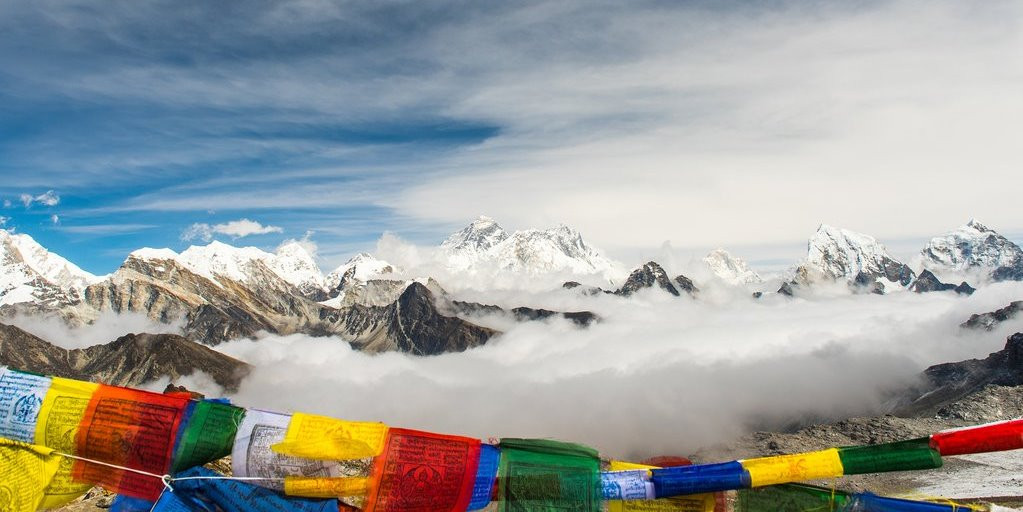
Key Features
-
Duration: Typically 14 to 16 days.
-
Difficulty: Challenging due to its high altitude and rugged terrain.
-
Best Season: The trek can be undertaken during the monsoon season; however, the pre-monsoon (March to May) and post-monsoon (late September to November) periods offer clearer skies and more stable weather conditions.
Highlights of the Everest Base Camp Trek
-
Namche Bazaar: Often referred to as the gateway to the high Himalaya, Namche Bazaar is a vibrant town filled with shops, cafes, and lodges, serving as a crucial acclimatization stop.
-
Tengboche Monastery: Situated at 3,867 meters, this is one of the largest and most active monasteries in the Khumbu region, with panoramic views of Everest, Ama Dablam, and other surrounding peaks.
-
Kala Patthar: While Everest Base Camp offers the thrill of being at the base of the world’s tallest mountain, the nearby Kala Patthar provides the best viewpoint to actually see the summit of Mount Everest along with a breathtaking 360-degree panorama of the surrounding mountains.
-
Sherpa Culture: The trek traverses Sherpa villages and offers numerous opportunities to learn about the Sherpa people, their culture, traditions, and their deep ties to mountaineering.
-
Sagarmatha National Park: The entire trek lies within this UNESCO World Heritage site, known for its rugged terrain, vibrant monasteries, and diverse wildlife including the snow leopard and Himalayan tahr.
Trekking Route: The journey typically starts with a scenic flight from Kathmandu to Lukla, one of the most dramatic and short runways in the world. From Lukla, trekkers pass through Phakding, ascend to Namche Bazaar, and continue through villages like Tengboche, Dingboche, and Lobuche. The trek reaches its climax at Everest Base Camp and the nearby Kala Patthar before following the same route back to Lukla.
Tips for Trekkers:
-
Acclimatization: Allocate ample time for acclimatization, particularly in Namche Bazaar and Dingboche, to adjust to the high altitude.
-
Permits: Ensure to obtain the necessary Sagarmatha National Park permit and the Khumbu Pasang Lhamu Rural Municipality permit.
-
Guides and Porters: Engaging a knowledgeable local guide and porters can provide insightful information about the area and significantly ease your load, allowing you to focus on the experience.
-
Preparation: The trek demands excellent physical fitness, and proper gear is crucial. Equip yourself with sturdy hiking boots, layers for cold weather, and other trekking essentials.
The Everest Base Camp Trek is a need to-do for passionate trekkers and those who dream of experiencing the elegance of the sector's highest peaks up close. It is an unforgettable adventure packed with awe-inspiring scenery, hard treks, and the warmth of the nearby Sherpa network.
Necessary gear and equipment
For a successful and safe trekking experience, especially in the challenging terrain of the Himalayas, having the right gear and equipment is crucial. Whether you're embarking on the Everest Base Camp Trek, the Annapurna Circuit, or any other high-altitude trek, being well-prepared will enhance your enjoyment and ensure your safety. Here is a comprehensive list of the necessary gear and equipment for Himalayan treks:
Clothing
-
Base Layers: moisture-wicking thermal tops and bottoms for insulation.
-
Trekking shirts and pants: lightweight and breathable, preferably quick-drying.
-
Insulation Layer: a fleece or wool sweater/jacket for additional warmth.
-
Outer Layer: waterproof and windproof jacket and pants for protection against rain and wind.
-
Down Jacket: For high-altitude treks where temperatures can drop significantly.
-
Undergarments: Enough for the duration of the trek, including sports bras for women.
-
Headgear: sun hat, beanie or wool hat for warmth, and a bandana or neck gaiter.
-
Handwear: lightweight gloves for warmth and waterproof gloves for higher altitudes or colder conditions.
-
Footwear: sturdy, waterproof trekking boots with good ankle support, and a few pairs of trekking socks (wool or wool-blend). Consider bringing sandals or sneakers for evenings in the teahouses.
Gear and Accessories
-
Backpack: a 50-65-litre backpack with a comfortable harness. A rain cover for the backpack is also essential.
-
Day Pack: For shorter excursions from base camps or teahouses, if your main luggage is carried by porters.
-
Sleeping Bag: A good quality, four-season sleeping bag. Many teahouses provide blankets, but a sleeping bag is necessary for hygiene and extra warmth.
-
Trekking Poles: To assist with balance and reduce strain on the knees, especially during descents.
-
Headlamp: With extra batteries, essential for early starts and navigating teahouses at night.
-
Sunglasses: high UV protection to safeguard against intense sun at high altitudes.
-
Sunscreen and Lip Balm: High SPF to protect against sunburn.
-
Water Bottles or Hydration System: With the capacity to carry at least 2 litres of water, water purification tablets, or a water filter.
-
First Aid Kit: Including medication for altitude sickness, painkillers, antiseptic cream, band-aids, and personal medications.
-
Personal hygiene items: toothbrush, toothpaste, biodegradable soap, shampoo, and wet wipes. Female hygiene products as necessary.
-
Towel: quick-drying and lightweight.
-
Snacks and Nutritional Supplements: Energy bars, trail mix, and electrolyte supplements can be useful.
-
Camera and Power Bank: For capturing memories and charging electronic devices.
-
Maps and Guidebooks: For navigation and information on the areas you will be trekking through.
-
Miscellaneous Items: including a sewing kit, duct tape (for gear repairs), and plastic bags for wet clothes.
Optional Items
-
Book or e-reader: for leisure time.
-
Journal and Pen: For documenting the trek.
-
Playing cards or travel games: for entertainment in the evenings.
Remember, the key to packing for a trek is balance. You want to be prepared for all conditions without overburdening yourself with unnecessary weight. It's also a good idea to wear your trekking boots and use your backpack before the trek to ensure they are comfortable.
Permits and fees
When planning a trek in Nepal, it's essential to be aware of the permits and fees required for each region to ensure legal compliance and contribute to the conservation and community efforts. Here's a combined overview of the necessary permits and fees for some of Nepal's most popular trekking destinations:
Permits and Fees Overview
-
Sagarmatha National Park Permit: Necessary for the Everest Base Camp Trek, this permit supports conservation efforts in the Everest region.
-
Khumbu Pasang Lhamu Rural Municipality Fee: Applicable for trekkers in the Everest (Khumbu) region, imposed by the local government.
-
TIMS Card: Required for treks in Annapurna and Langtang regions, and sometimes for Everest, to manage trekker information and ensure safety.
-
Annapurna Conservation Area Permit (ACAP): Required for the Annapurna Circuit Trek and any other treks within the Annapurna Conservation Area to fund conservation projects.
-
Langtang National Park Permit: Required for the Langtang Valley Trek, contributing to the conservation of wildlife and natural resources in Langtang National Park.
-
Manaslu Conservation Area Permit (MCAP) and Special Restricted Area Permit: Necessary for the Manaslu Circuit Trek due to its location in a conservation and restricted area.
-
Upper Mustang Special Restricted Area Permit: Required for the Upper Mustang Trek, with costs significantly higher due to the area's restricted status.
-
Costs: Permit costs vary by region. General conservation area and national park permits are around USD 30. TIMS cards are about USD 10-20. Restricted area permits, like for Manaslu or Upper Mustang, are more expensive, often exceeding USD 100, depending on the season and duration.
Where to Obtain and Documentation Needed
-
Obtaining Permits: Most permits can be acquired in Kathmandu or Pokhara at the respective conservation area or national park offices. TIMS cards are available at the Nepal Tourism Board offices. Restricted area permits must be arranged through a registered trekking agency.
-
Documentation: Trekkers need to provide a copy of their passport, visa, and passport-sized photos for most permits. Restricted area permits require an application by a registered trekking agency on behalf of the trekker.
Key Points
-
Always check the latest permit requirements and fees before your trip, as these can change.
-
Trekking with a reputable agency helps in smoothly obtaining all necessary permits and ensures adherence to local laws and conservation efforts.
-
The cost of permits contributes to conservation, maintenance of trekking routes, and support for local communities, enhancing the sustainability of trekking tourism in Nepal.
By understanding and preparing for these permit requirements and fees, trekkers can ensure a hassle-free and responsible trekking experience in Nepal's majestic Himalayas.
Trekking in Nepal during the monsoon season offers unique stories, from lush landscapes to colorful cultures. Each of the 5 highlighted treks—from the far-off Dolpa to the iconic Everest Base Camp—offers wonderful challenges and rewards, including much less crowded paths and vibrant greenery. To ensure a safe and exciting revel, the right training is vital. This consists of equipping yourself with appropriate gear, choosing the right routes, and probably hiring skilled courses. Embracing these adventures throughout the monsoon allows trekkers to witness the beautiful splendor of Nepal in full bloom, making for unforgettable journeys.
FAQs for Best 5 Monsoon Treks in Nepal
Q: What makes monsoon trekking in Nepal special?
A: Monsoon trekking offers lush landscapes, vibrant wildflowers, and fewer tourists, which means more peaceful trails and better chances for cultural immersion. Certain regions like Dolpa and Mustang are ideal for monsoon trekking due to their location in rain shadows, experiencing less rainfall.
Q: Which trek is the most challenging during the monsoon?
A: The Everest Base Camp Trek can be quite challenging during the monsoon due to heavy cloud cover, slippery trails, and occasional snow at higher altitudes. Proper gear and cautious planning are essential.
Q: Are there any specific preparations needed for monsoon trekking in Nepal?
A: Yes, trekkers should invest in waterproof gear, including jackets, pants, and backpack covers. Carrying insect repellent for leeches, sturdy boots with good grip, and trekking poles for extra stability on muddy paths is advisable.
Q: What should I do if I experience altitude sickness?
A: Stop ascending and rest if you experience altitude sickness. If symptoms persist or worsen, descend to a lower altitude and seek medical attention. Always acclimatize properly as you gain elevation.
Q: How do I choose the right guide or trekking company?
A: Choose a reputable trekking company with positive reviews and experienced guides familiar with high-altitude trekking and monsoon conditions. Ensure that the company is registered and follows ethical trekking practices, particularly concerning the treatment of porters and environmental conservation.
Q: What is the best way to deal with leeches on the trail?
A: Apply insect repellent on your boots and socks. Salt or tobacco juice can also be effective at deterring leeches. Regularly check and remove any leeches that attach to your clothing or skin.
Q: Can I trek solo during the monsoon in Nepal?
A: While solo trekking is possible, it is not recommended during the monsoon due to increased weather-related risks. Having a guide or joining a group can enhance safety, especially on less traveled trails.
Q: What kind of wildlife might I see during these treks?
A: Depending on the region, you might see wildlife including blue sheep, snow leopards (rarely seen), Himalayan tahr, and diverse bird species, particularly in the conservation areas.
Q: Are there any cultural considerations I should be aware of?
A: Respect local customs and traditions. Always ask permission before photographing people, dress modestly, and be considerate of cultural norms, especially when visiting monasteries and religious sites.
For the Nepal Tour, please click here.
If you are looking for different kinds of Nepal Packages, feel free to contact us.
.jpg)






